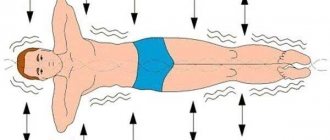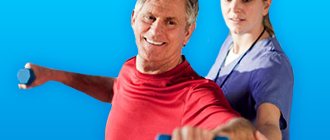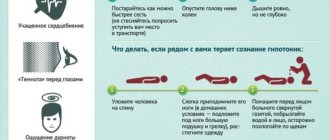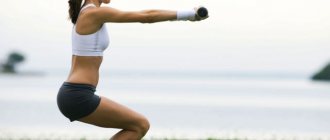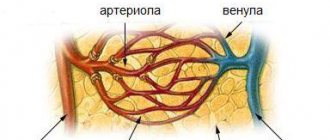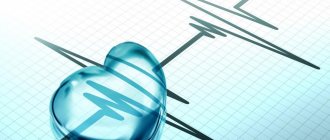A persistent increase in blood pressure today quite often occurs against the background of pathological changes in the cervical vertebrae, leading to ossification of their soft components. Displaced elements of the spine often compress the blood channels leading to the brain. And this, in turn, leads to a deficiency of oxygen in the body and contributes to an increase in the number of contractions of the thick heart muscle.
Due to the last factor, standard blood pressure indicators often change upward, which is not good for any human body.
How are the human neck and blood pressure related?
The vertebrae of the cervical spine are one of the most mobile parts of the human spine. Thanks to them, a person performs numerous turns of the head from side to side, as well as circular movements with it.
Due to heavy physical activity, the cervical elements of the spine are one of the most vulnerable parts of the human axial skeleton
There are only seven cervical vertebrae in the human body. With osteochondrosis, they often compress the main artery of the axial skeleton, which is responsible for delivering blood to the responsible parts of the brain. As a result, the latter instantly receives a signal about hypoxia, and the human body concentrates as much as possible on preventing oxygen starvation of the most important organ. Vascular tone increases, blood flow increases, and normal blood pressure levels increase.
In most cases, when osteochondrosis suddenly appears, people do not pay close attention to the emerging disease; they neglect treatment and continue to live peacefully. Over time, even the appearance of hypertension becomes normal for them. But in fact, pain in the spine and a diagnosis such as high blood pressure are worth fighting to prevent the development of more serious complications in the future.
In order to cure hypertension, restore the circulation of biological substrates in the body and eliminate deformation of the vessels of the cervical spine, many specialists, in addition to prescribing pills and using any other methods of treatment, recommend their patients to regularly do Alexander Shishonin’s gymnastics.
What physical exercises can be done for hypertension?
A physiotherapist or rehabilitation specialist will help you choose a set of exercises for hypertension.
- Walking _ There are various variations of this exercise: regular steps, on toes, on heels. These types can be alternated. Perform the steps for about five minutes.
- Bike . Sit on a chair and rest your hands. Raise your legs and imitate riding a bicycle. Perform the exercise in several approaches, but no more than five, and be sure to rest between them.
- Tilts . Sit on a chair, cross your arms over your chest. Pull your shoulders back, and as you exhale, bend your torso forward, trying to reach your heels with your hands. Perform all actions smoothly, do not bend over too sharply and avoid a low head position so as not to provoke a sharp rise in pressure.
- Sitting on a chair with a high back so that there is a fulcrum for the head. Move your arms slightly away from your body. Start rotating with relaxed arms from the elbow - first inward and then outward. Repeat the circular movements 20 - 25 times. Raise your arms a little higher and now perform rotations in the same way, but starting from the shoulders. This exercise stimulates peripheral circulation.
- Sitting on a chair, spread your arms to the sides. Lift your legs one by one and pull them towards your body with your hands. Repeat five times.
And also read on our website: What is nocturnal hypertension? Symptoms, treatment and prevention of the disease
- Therapeutic gymnastics for arthrosis of the hip joint - a set of exercises
We invite you to watch a video about what physical exercises you should do for hypertension:
What is Alexander Shishonin’s gymnastics?
This unique development is a set of specific exercises aimed at training the muscles of the cervical spine and stopping destructive processes in the collar area, which negatively affect the upper part of the spinal column.
Doctor Alexander Yuryevich Shishonin first presented his creation, created together with medical workers at the Bubnovsky health center, at a specialized international congress in the USA. And since 2008, Dr. Shishonin’s technique has become popular among many patients suffering from cardiovascular diseases. This method is actively used to this day to treat various other diseases:
- hypertension;
- diseases of the endocrine system and diabetes;
- vegetative-vascular dystonia, etc.
And also for correction of the cervical spine with insufficient cerebral blood supply, constant headaches, chronic fatigue, severe fatigue or decreased performance, failure to maintain proper nutrition, etc.
Basic rules for performing the complex
Before you start performing physical therapy exercises, you need to familiarize yourself with the basic basic rules:
Can cervical osteochondrosis cause high blood pressure?
- the exercise itself is performed 1.5-2 hours after finishing the meal, not earlier;
- before performing the exercises, the cervical area and the back of the head are pre-warmed with light, slightly massaging circular movements;
- physical activity should increase gradually - for the first 7-10 days it will be enough to do 3-4 exercises from the seven described below;
- Regularity is important - in the first week you should do gymnastics daily so that the body can get used to physical activity, later it is recommended to reduce the exercises to three times a week;
- during gymnastics, you need to keep your back straight and your head level; the exercises themselves should be performed slowly and carefully, since quick jerks will not lead to a good result, but will only aggravate the situation.
Neck exercises
The Shishonin method of exercises includes seven exercises that help to effectively work on the muscles of the cervical frame. You can clearly see each of them in the video “Secrets of treating hypertension from Dr. Shishonin” on YouTube.
The main idea of this exercise is to fully comply with the exercise technique and clearly fix the neck in a certain position for a certain period of time: for beginners this is 10-15 seconds, for advanced users - on average 30 seconds.
It is recommended to perform exercises from this exercise therapy accompanied by relaxing music or without any sound at all.
"Metronome"
This exercise works well, strengthens and stretches the lateral muscles of the cervical frame. It is enough to repeat it 5 times for each side.
During the execution, it is necessary to alternately tilt the head in each direction so that strong tension is felt in the muscles located on the opposite side of the neck. Each tilt must be fixed for at least 10–15 seconds.
"Spring"
This exercise helps strengthen the muscles located at the top of the spine.
In the process of performing it, it is necessary to pull the back of the head as high as possible so that the chin part of the face is pressed against the collarbone, and the back muscles of the neck are very tense. The head must be fixed in this position for at least 10–15 seconds.
After performing the exercise, the chin should be slowly moved upward, thus achieving tension in the anterior muscles of the cervical frame. Under no circumstances should you throw your head too far behind your back. The whole process must be kept under control.
"Look to the Sky"
This exercise helps to work out and train the deep cervical muscles located under the back of the head. It is recommended to perform it while sitting.
During the execution, you need to straighten your back as much as possible and stretch your neck upward. From this starting position, it is necessary to alternately tilt your head in each direction until it stops, without helping your body by turning your shoulders. In a tense state, you should hold your head for at least 10–15 seconds.
"Frame"
This exercise helps strengthen, develop and tone the scalene muscles of the neck, located on the sides of the neck, between the collarbone and trapezius muscle. The starting position here is sitting on the floor, your back and shoulders should be straight.
During the execution, it is necessary to loosen one hand and place the other on the shoulder of the opposite limb so that its elbow is parallel to the floor. Pressing the palm of your hand against the shoulder joint, you need to turn your head in the direction opposite to the shoulder joint on which the hand is located, and press it onto the shoulder. This position should be fixed for a while.
"Fakir"
This exercise helps to train the muscles of the upper limbs and cervical spine, reduce their involuntary contraction and significantly improve the movement of blood flow in this area. Starting position – sitting, clasping your hands raised up above the top of your head. During the exercise, you must slowly turn your head in each direction in turn so that the hands fixed above it remain in place. Each turn must be fixed for at least 10–15 seconds.
"Heron"
This exercise has a general strengthening effect on the muscles of the neck and thoracic spine, helps reduce the feeling of heaviness in the back, and also improves posture.
When performing it, you need to move the upper limbs of the body as far as possible behind the back, while creating tension in the interscapular muscles. In this case, the chin part of the face must be pulled up, stretching the anterior muscles of the neck, and fixed in this position for at least 10–15 seconds, and then relaxed. The exercise must be repeated three times.
How to do breathing exercises for arterial hypertension
Proper breathing allows you to avoid oxygen starvation of the brain, which provokes pressure surges. For prevention and treatment, you can perform simple exercises:
- Take a sitting position, keep your posture straight, relax. Take 4-5 sharp breaths through your nose, keep your mouth tightly closed. Do not pause between breaths. Exhale, take a break for 5-10 seconds and repeat inhalations 20 times;
- Take a comfortable position, sitting or standing, clasp your shoulders with your arms. Do repetitions to the left, inhale sharply through your nose, turn to the starting position, exhale through your mouth. Do the same to the right. It will take 8-10 turns;
Stand up and squat with a straight back. Tilt your head to the side, pressing your ear to your shoulder. Inhale sharply through your nose and slowly exhale through your mouth. Then do the same exercise in the other direction. Repeat 8-10 times.
Final massage
It is recommended to complete the main exercises of Shishonin training gymnastics with a restorative massage of the cervical spine.
Massage can be done either with your own hands or with the help of a specialist.
The massage technique is simple. First, you need to massage the occipital region of the head, while avoiding strong finger pressure on this area. After a few minutes, you should move with gentle movements to the spine, not bypassing the shoulders and upper part of the scapula. Next, using circular movements, you need to work out all the vertebrae in the neck; it is recommended to start from the bottom. After pinpointing the latter, you need to grab the neck with your hands so that the thumb is in the back of it, and the rest are on the sides, and begin a pinching massage of the upper back, slowly moving to the front of the neck. Next, after finishing with pinching, you need to work the area from the chin to the collarbone with point movements. The massage should be completed by slowly massaging the temples with the index fingers and working the back of the head with rolling movements.
The final massage will help the neck muscles relax after the stress received during exercise, and will also quickly relieve headaches, if any.
Positive aspects of gymnastics and contraindications
Shishonin’s gymnastics for hypertension not only has a positive effect on blood pressure, but also reduces pain in the cervical back, normalizes blood circulation, activates metabolic processes and removes swelling.
In addition, Dr. Shishonin’s gymnastics has a number of other advantages:
- it is easy to do and is suitable even for those people who do not have highly developed physical fitness;
- performing all the exercises takes no more than 20–30 minutes and does not require a separate room, any additional equipment, or special sportswear (it is enough to wear comfortable clothes that do not restrict body movements);
- all exercises are performed smoothly, slowly, which means that the likelihood of accidentally injuring the tendons during their execution is eliminated.
Like any other exercise therapy complex, Shishonin’s neck gymnastics has its contraindications. It is prescribed only at the first or second stage of osteochondrosis and is used mainly in conjunction with other treatment methods. In case of serious violations, the situation can only be corrected by surgical intervention. This therapy is also not prescribed:
- in the presence of critical inflammation in the body and internal bleeding;
- when body temperature is very high;
- in case of detection of disturbances in the functioning of the body’s hormonal system;
- when there are pronounced painful sensations in the neck, shoulders and back;
- in case of malignant formations in the neck area.
The above-described gymnastics has many positive reviews from hypertensive patients. Many patients suffering from a hypertensive crisis note that performing these exercises not only helps to quickly get rid of hypertension, but also helps to eliminate headaches and insomnia without the use of drugs, and also improves neck mobility and overall performance of the body. Some people even report improved visual acuity.
Benefits of physical activity
By performing simple physical therapy exercises, you can highlight the positive aspects for your health:
- Simple exercises help normalize the functioning of the heart and blood vessels, and increase the capabilities of the respiratory system. The elasticity of blood vessels improves, and the amount of “bad” cholesterol decreases.
- Metabolic processes are improved, harmful metabolic products are eliminated faster, and the load on the kidneys is reduced.
- The immune system is strengthened, which is also the prevention of seasonal colds.
- Thanks to deep and rapid breathing during exercise, lung ventilation improves.
- Exercising is an excellent way to prevent constipation.
- Fat tissue is gradually replaced by muscle tissue, and weight returns to normal.
- Increasing physical activity promotes healthy sleep and prevents stress.
- Joints become more elastic, bones become stronger.
- Memory improves by improving oxygen supply to the brain.
- Women endure menopause more easily, while men maintain potency throughout their lives.



